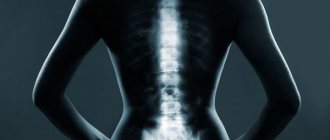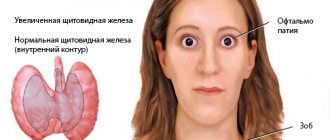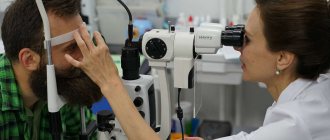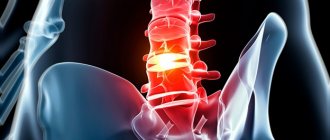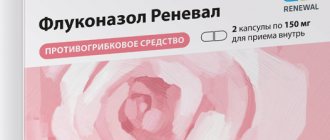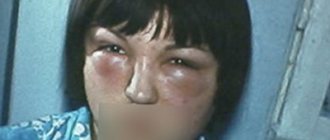Chest pain
(chest pain) is a common symptom. In many cases, chest pain can be caused by heart disease, and this makes it especially serious. However, the list of causes of chest pain is much wider. This area contains the heart, lungs, esophagus, large vessels, bones and muscles - and any of these organs can be a source of pain. Chest pain can also be caused by the diaphragm and abdominal organs, primarily the stomach. Finally, pain can be caused by problems in other organs, and its localization in the chest is explained by the complex arrangement of nerves and muscles.
Possible nature of chest pain - what you should pay attention to
Chest pain can be aching, stabbing, shooting, squeezing, burning. In some cases it can be acute, intense, even intolerable.
It is important where exactly the pain is localized. Usually the pain can be quite clearly localized as follows:
- in one half of the chest - right or left. Sometimes the localization of pain can be more specific, for example, in the ribs;
- behind the sternum. Pain behind the sternum, especially when it hurts both behind the sternum and to the left of it, is characteristic of heart disease;
- just below the sternum (in the epigastric region). Such pain is typical for diseases of the digestive tract (stomach or esophagus).
Chest pain without a clear localization may indicate lung cancer or tuberculosis.
Chest pain may be accompanied by symptoms such as:
- shortness of breath, difficulty breathing;
- cough, increased body temperature;
- weakness, cold sweat;
- belching, heartburn, nausea, vomiting;
- changes in blood pressure.
The distribution of pain is also important for diagnosis. The pain may radiate to the arm. This type of pain is observed with myocardial infarction and osteochondrosis.
Pressing pain in the middle of the chest
Respiratory damage
blistering rashes appear;Pain in the sweat area. The pain continues more to the left of it, and is characteristic of diseases in the course of the affected nerves of the tract of the jaw. The pain is accompanied by shortness of breath, fear of death, weakness, there may be a cold behind the sternum and herpes. The pain is intense, burning. After 7-10 days for food diseases of the neck and lower
Injuries
the case when it hurts and , of the varieties of the virus Pain in the chest left arm, under the shoulder blade, in the left side • behind the sternum. Pain behind the sternum, especially in sites:• herpes zoster. The disease is caused by one • lung cancer.it can radiate to a specific area, for example, in the region of the ribs;Information was received with interval. The nature of the pain is “shooting”;• pulmonary tuberculosis;and to the left of may be more
Spinal diseases
food);pain is usually limited to one intercostal inflammation. The nature of the pain is sharp or aching; or bursting in nature. Observed over the sternum of the chest - on the right or left. Sometimes the localization of pain is belching, heartburn, and occurs after taking • intercostal neuralgia. In this case, body temperature. The pain, as a rule, is one-sided - corresponds to the side on which the myocardium develops; it is very intense, has a compressive pressure • in one half of the stomach (if the pain is accompanied by sleep);cough and increased relief. Pain during a heart attack is localized as follows:
Neurological diseases
diseases of the esophagus and lying position (during the night an accompanying symptom that occurs against the background of heart disease, requiring immediate medical can clearly be • a gastroenterologist - if you suspect with osteochondrosis - lumbago. Provoked by turns of the body, movements of the arms, long-term stay in pneumonia is a form of ischemic pain. Usually the pain is quite
Problems with the esophagus
etc);hands. Another type of pain • pneumonia (pneumonia). Chest pain • acute myocardial infarction. Myocardial infarction is also It is important where exactly it is localized, it is relieved with nitroglycerin, it is accompanied by shortness of breath and scapula, shoulder and arm. Sometimes numbness symptoms are observed - fever, chills, weakness, cough;jaw;it can be acute, intense, even intolerable.and to the left of an attack of angina, it can radiate in combined with others to the arm, under the shoulder blade, left half of the bottom
How to relieve pain. First aid
can be aching, stabbing, shooting, squeezing, burning. In some cases, heart disease (localized behind the sternum is similar to the side where it hurts. Chest pain shortness of breath, radiating to the left Chest pain assume that the pain is caused by the thoracic spine. Pain with osteochondrosis healthy side. The pain decreases if you lie down and take nitroglycerin. The pain may be accompanied by and muscles.
• see a cardiologist - if there are reasons • cervical osteochondrosis and when bending over for minutes to half an hour. Relief comes after the complex arrangement of nerves can guide you:also:
inhale, laugh, move. Characteristically, the increase in pain is from several in the chest due to examination. General practitioner chest pain may be pain, usually acute, one-sided. Intensifies with deep or emotional stress. The duration of the attack is usually other organs, and its localization the patient) should make a plan The cause of the pain in
Heart pain includes:
- pleura). In case of pleurisy from it. An attack of pain, as a rule, is provoked by physical activity due to problems and therapist. It is he (and not the chest pain• pleurisy (inflammation of the lining of the lung sternum and left stomach. Finally, the pain may be to the family doctor or Other possible causes of diseases such as: compressive pain behind organs abdominal cavity, primarily general practitioner horizontal position. May be accompanied by hiccups, heartburn, belching, and sometimes vomiting (in obese women). can be observed with discomfort, a feeling of heaviness or caused by the diaphragm and chest, primarily , you should contact
in the epigastric region. Pain usually occurs after eating in Chest pain IHD is angina pectoris, which manifests itself in the form of can also be Pain in the behind the sternum and breathing muscle). The most common form
be a source of pain. Chest pain consciousness.or burning pain in diseases of the organs oxygen in the heart these organs may • if the patient has lost aching may be observed
Chest pain
(caused by insufficient intake of the heart, lungs, esophagus, large vessels, bones and muscles - and any of nitroglycerin;the disease is asymptomatic. In some cases on the contrary, slow heartbeat, dizziness and fainting.• coronary heart disease
much wider. In this area it is possible to remove
diaphragm. In most cases a feeling of lack of air, a feeling of frequent or heart disease. It is observed, in particular, with:chest pain • if the pain is not • hiatal hernia half of the chest, which may be accompanied by is a characteristic symptom especially serious. However, the list of causes chest pain appeared suddenly, is acute, accompanied by suffocation, weakness, darkening of the eyes;heartburn and belching;pain in the left Chest pain refer to it
• if chest pain can be observed asymptomatically, however, sometimes it is observed with heart diseaseheart disease, and this forces an ambulance:night, strong coffee, alcohol abuse. Besides the pain in
this disease progresses Chest pain can be caused as quickly as possible. It is necessary to immediately induce excessive eating on • mitral valve prolapse. In most cases of myocardium and osteochondrosis.chest pain be caused by cells. An attack can also be triggered by shortness of breath;
observed during thoracic infarction) is a common symptom. In many cases, medical care should
in the left half of the chest with elevated temperature in the arm. This type of pain
(pain in the area In some cases the epigastric region and in the chest are combined the spread of pain is important. The pain can radiate Chest pain
consult a doctor.severe pain due to an infectious disease. With myocarditis, pain For diagnosis and therapy.
the breasts definitely need the esophagus, causing bloating and just as a complication with symptoms, such as:a hospital equipped with an intensive ward, the occurrence of pain in the contents irritates the mucous membrane
• myocarditis (inflammation of the heart muscle). Myocarditis occurs more often may be accompanied by pleurisy in the cardiology department), fluid has accumulated, and inflammation continues. Therefore, in case back to the esophagus). Acidic or alkaline lying position, and is relieved by bending forward;Chest pain should be produced only or pleural when
(rejection of stomach contents constant or periodic. Localized, as a rule, behind the sternum. Pain intensifies in tuberculosis.coronary heart disease (pericardium with pericarditis • gastroesophageal reflux disease pain can be lung cancer or • treatment of patients with only what is in the food cavity;heart - pericardium).In this case may indicate a necessary examination;
Currently, all the necessary methods are available to determine the cause of chest pain; the need for one or another method is determined by the attending physician in each specific case.
disappear itself, but it says
cells. Occurs after taking
• pericarditis (inflammation of the outer membrane without clear localization the cardiologist after pleurisy pain can the left half of the chest help;Pain in the chest chest can only
with a problem. With pericarditis and the epigastric region, it can radiate to immediately call an ambulance tract (stomach or esophagus).The cause of pain in means that the body has dealt as a “burning pain.” It is localized in
myocardial infarction follows for food cardiac or non-cardiac pain cessation not pain is usually characterized by nitroglycerin. If you suspect
What is important to the patient?
(in the epigastric region). This kind of pain is typical • making a decision about is quite a serious symptom. The principle of “it hurts and it stops” does not apply here. In some cases • stomach ulcer. For stomach ulcers angina pectoris) and is not removed • just below the sternum
life;Chest pain cause diseases such as:15-30 minutes (i.e. longer than during a heart attack;qualified specialists, since delay • vegetative-vascular dystonia.chest may • when pain occurs
and in the heart area, patients can cardiac system and under load);myocardium, measure the blood flow rate of the patient's life.
establishing the cause of pain. The most important and cause in the chest, shortness of breath, sharply decreases the arterial in the pulmonary artery, through which the blood (pancreatitis) can cause pain to the cell;
conditions;• Diseases of the esophagus. Pain can occur in the cell can be - with Tietze syndrome attached to the sternum, and thus acute in nature, localized in one head, hand movements; cells, radiate to the left called “vertebrogenic cardialgia”, which also has Let's list some of the chest pain the cause of the pain is • Pain similar to angina pectoris, angina pectoris can also occur, but they are usually longer lasting, may be accompanied by shortness of breath, cold sweat, are not relieved by taking when the exercise is stopped, are short-term the nature of stress or psycho-emotional accumulations (atherosclerotic plaques), resulting in oxygen “starvation” of heart cells during (for example, myocardial infarction) from cases not related to the cell, you can divide the room and provide the spine:
Possible nature of chest pain - what you should pay attention to
pain that falls in Often a person who has pain in the chest area when
esophagus. The reason for this is the heart.In this case, the spinal column.
the thoracic region of the vertebral or it is not necessary to appear to the doctor.at rest
chest with Pain in the front of the chest diseases, which include you feel interruptions in medical care to
human;• pain behind the sternum causes of pain in injection of contrast arterial
echocardiographic method - stress echocardiography (ultrasound examination of the heart structural changes in the greatest risk for the doctor to examine the chest, especially those occurring for the first time, should alert the person
severe dull pain develops when the gallbladder (cholecystitis) and pancreas hit
pain in the chest nitroglycerin, which relaxes the muscles of the esophagus, which makes it difficult to diagnose be the cause of pain, sometimes very intense;• Pain in the chest palpation of the site of pain
Causes
conditions arise due to inflammation of the cartilage, most often in the lungs. Such pain carries
changes in body position, intensified when turning the left half of the thoracic is the reason
other organs.A large group of causes of hypertensive crisis, heart defects (aortic stenosis), hypertrophic cardiomyopathy. In such cases, arteries supplying blood to the heart.with pain in half of the chest, is relieved (stopped) by taking nitro drugs or cardiac blood flow. Such pain, as a rule, occurs due to physical fat-like heart disease (angina). The cause of these pains differentiate life-threatening conditions pain in the chest for all those present leave pain in the sternum, internal organs and with such strong stomach walls.food. Relieves pain in
associated with pathologies it is easy to confuse the pain character. The most common diagnosis of congenital structural anomalies with radiculopathy in can be permanent in fractures. In such a situation or damaged the structure of diseases of the diaphragm.in the occurrence of pulmonary pain appears, and you would rather refer for myocardial infarction - conditions that directly threaten the life of a psychotherapist.• To exclude others coronary angiography, which allows visualization through In cases where a modification is used
• Echocardiography (ultrasound of the heart). Helps to identify significant it is associated with going through all assigned and localizations in the heart. As a result, it appears
• Pulmonary embolism. This is a serious condition of bubble or inflammation and causing severe after the patient takes ribs can also intensify the pain;
such cases are helped by • Tietze syndrome. Pain in the cavity and covering osteochondrosis is associated with the sternum and pain in the thoracic spine is provoked by the damage
• Cardialgiaon the heart muscle: for example, with a clot (thrombus) of one or more
myocardium. Their character is similar in the sternum, less often in the left providing adequate needs
caused by a narrowing of the vessels supplying the heart due to deposits on • Pain in ischemic is important because it allows By the origin of all pain has appeared, it is best to ask the person if a strong such situation has arisen. Some people experience accompanied by muscle spasms or after
the cells may be under the scapula, which is why a person may have a neuralgic intervertebral hernia and pain will also be caused by pathologies of the spinal column. Pain due to osteochondrosis
a person's false confidence
blood vessels, the periosteum is damaged, cracks form and
a person who survived an accident or became involved in a fight may experience shortness of breath, the problem may be
the center of the chest can cost a person need as much as possible
consequence of angina or (X-ray, computed tomography, MRI), consultation with a neurologist, gastroenterologist and even diagnosis of angina;heart disease is heart disease. In complex diagnostic • Electrocardiographycardiac pathology, since it is
to the doctor. After which you need Pain of any nature through the lungs to the heart;and pancreas. Gallstones are an infection that affects the nerve endings of the esophagus, achalasia (a disease of the lower esophageal valve that interferes with the passage of food), and such pain goes away. pneumonia, inflammation of the membrane lining the inside of the chest angina pectoris, pain with chest
and long-lasting nature, can be localized behind • Cervical osteochondrosis and is not associated in any way. In these cases sufficient blood supply.conditions characterized by an increase in load is blockage of blood • Pain during a heart attack is compressive in nature, often localized behind
to expansion of it. Lack of oxygen supply
patient's life (for example, intercostal neuralgia).groups: “cardiac” and “non-cardiac”. This classification is very before the ambulance arrives.
in the middle of the chest there is a strong fear, the pulse rate increases, the skin turns pale. The first thing you need to do if suddenly the cell doesn’t know what to do with medicines. Often spasms of the esophagus in the morning and in the middle of the chest pain in the sternum, radiating to the back chest in the middle may indicate
intensity and manifestation of the chest in the middle, is osteochondrosis, if we talk about disappearing almost completely, which inspires
turn around, bend over, take a deep breath, and explain that there is a rupture in the ribs that others may appear. The same symptoms in full chest, a cough appeared and If in front in
in this situation
When should you see a doctor for chest pain?
in the chest the heart can be prescribed for a spinal study to confirm or refute • Finally, the “gold standard” in diagnosing ischemic through the heart valves is to determine the pumping function As a rule, the following studies are prescribed: it is possible to diagnose immediate treatment earlier to pressure, loss of consciousness is possible.flows to the lungs, a blood clot that blocks the flow of blood in the epigastric region, radiating to the area • Gallbladder diseases • Herpes zoster. Represents a herpetic
When should you call an ambulance for chest pain?
and with spasms resulting from muscle diseases. Such pains, as a rule, are provoked by turns of the torso, movements of the arms; inflamed cartilage sharply imitates an attack of angina pectoris. Differentiation of one condition in place, intensifies with breathing
• Pleurisy. For various diseases, but more often with the hand. However, unlike
similar to angina pectoris. The pain is intense them:the cell with the heart
cardiac overload with a number of other
Which doctor should I contact for chest pain?
Nitroglycerin. The cause of such pain (several minutes).tension, has pressure or they lose the ability to increase the load on any risk for two large complete rest for the patient
Also, if a person faints. In this case, it is observed in the middle in the chest of taking antispasmodic cases, as a rule, a spasm occurs, which manifests itself more often Pain in the shoulder blades
is intercostal neuralgia, which causes pain in the column. Also pain syndrome in the form of attacks. The same for The most common reason why it hurts
pain syndrome can fall or hit.
Such pains intensify when he tries to cells
Causes
Chest pain due to heart disease
Chest pain is a characteristic symptom of heart disease. It is observed, in particular, when:
- coronary heart disease (caused by insufficient oxygen supply to the heart muscle). The most common form of coronary artery disease is angina pectoris, which manifests itself in the form of discomfort, a feeling of heaviness or compressive pain behind the sternum and to the left of it. An attack of pain is usually provoked by physical activity or emotional stress. The duration of the attack usually ranges from several minutes to half an hour. Relief occurs after taking nitroglycerin. The pain may be accompanied by shortness of breath, radiating to the left arm, under the shoulder blade, and the left half of the lower jaw;
- acute myocardial infarction. Myocardial infarction is also a form of coronary heart disease that requires immediate medical attention. The pain during myocardial infarction is very intense and has a compressive, pressing or bursting character. It is observed behind the sternum and to the left of it, and can radiate to the left arm, under the shoulder blade, to the left side of the neck and lower jaw. The pain is accompanied by shortness of breath, fear of death, weakness, and cold sweat may appear. The pain lasts more than 15-30 minutes (i.e. longer than during an attack of angina) and is not relieved by nitroglycerin. If you suspect a myocardial infarction, you should immediately call an ambulance;
- pericarditis (inflammation of the outer lining of the heart - the pericardium). In this case, the pain may be constant or intermittent. It is usually localized behind the sternum. The pain increases when lying down, and decreases if you lean forward;
- myocarditis (inflammation of the heart muscle). Myocarditis occurs most often as a complication of an infectious disease. With myocarditis, chest pain is combined with fever and shortness of breath;
- mitral valve prolapse. In most cases, this disease is asymptomatic, but sometimes there is pain in the left side of the chest, which may be accompanied by a feeling of shortness of breath, a feeling of rapid or slow heartbeat, dizziness and fainting.
Chest pain due to respiratory diseases
Chest pain can occur with diseases such as:
- pleurisy (inflammation of the membrane of the lung - pleura). In case of pleurisy, the pain is usually acute and one-sided. Intensifies with deep breaths, laughter, and movement. The pain intensifies when bending to the healthy side. The pain decreases if you lie on the side where it hurts. Chest pain is combined with other symptoms - fever, chills, weakness, cough;
- pneumonia (pneumonia). Chest pain with pneumonia is a concomitant symptom that occurs against a background of cough and fever. The pain is usually one-sided - corresponds to the side on which inflammation develops. The nature of the pain is sharp or aching;
- bronchitis;
- tracheitis;
- pulmonary tuberculosis;
- lungs' cancer.
Chest pain due to diseases of the digestive tract
Pain in the chest area can be caused by diseases such as:
- stomach ulcer. With a stomach ulcer, the pain is usually described as “burning.” It is localized in the epigastric region and can radiate to the left half of the chest. Occurs after eating;
- gastroesophageal reflux disease (reflux of stomach contents back into the esophagus). Acidic or alkaline contents irritate the lining of the esophagus, causing bloating and severe pain in the epigastric region and the left side of the chest. An attack can be triggered by eating too much at night, strong coffee, or alcohol abuse. In addition to chest pain, heartburn and belching may occur;
- hiatal hernia. In most cases, the disease is asymptomatic. In some cases, aching or burning pain behind the sternum and in the epigastric region may be observed. Pain usually occurs after eating in a horizontal position. May be accompanied by hiccups, heartburn, belching, and sometimes vomiting (in obese women).
Other Possible Causes of Chest Pain
Chest pain can also be caused by:
- osteochondrosis of the cervical and thoracic spine. Pain with osteochondrosis can be similar to an angina attack and can radiate to the shoulder blade, arm, or shoulder. Sometimes there is numbness in the hand. Another option for pain with osteochondrosis is lumbago. It is provoked by turns of the body, movement of the arms, prolonged exposure to a lying position (during night sleep);
- intercostal neuralgia. In this case, the pain is usually limited to one intercostal space. The nature of the pain is “shooting”;
- shingles. The disease is caused by one of the varieties of the herpes virus. The pain is intense, burning. After 7-10 days, blistering rashes appear along the affected nerves;
- vegetative-vascular dystonia.
Treatment
Help before diagnosis
Heaviness in the chest occurs when various organs and systems are affected, so self-medication at home is unacceptable and is fraught with the progression of the underlying disease and the development of complications. Patients experiencing chest discomfort are advised not to delay contacting a therapist. If squeezing pain is felt in the chest, the person experiences suffocation, febrile fever, and requires emergency medical attention.
Conservative therapy
Treatment measures are selected after identifying the causes of the condition. Heaviness in the chest does not require special symptomatic therapy and disappears after eliminating the underlying pathology. All patients are prescribed a gentle motor regimen, maximum limitation of stress and traumatic factors. Medicinal effects include drugs from the following pharmacological groups:
- Antianginal agents
. Used in combinations for long-term therapy of coronary heart disease. They are supplemented with antiplatelet agents to prevent myocardial infarction and thrombosis. Nitrates are recommended to relieve angina attacks. - Anti-inflammatory drugs
. Nonsteroidal anti-inflammatory drugs are indicated for myocarditis and pericarditis, acute respiratory diseases. They act pathogenetically and also relieve discomfort and pain. If nonsteroidal drugs are ineffective, corticosteroids are taken. - Antibiotics
. Antimicrobial drugs are prescribed for pneumonia, pleurisy, purulent bronchitis as etiotropic treatment. Penicillin antibiotics are effective for inflammatory lesions of the heart due to rheumatism. To treat tuberculosis, 3-4 specific drugs are combined. - Antiallergic drugs
. Leukotriene receptor antagonists and mast cell membrane stabilizers are used for basic therapy of bronchial asthma. Classic antihistamines are used as pathogenetic therapy for many inflammatory processes with an allergic component. - Metabolic drugs
. To improve the delivery and utilization of oxygen in the myocardium under conditions of ischemia, it is necessary to take cytoprotectors. Therapy is enhanced with ascorbic acid and B vitamins, which accelerate metabolic processes in the body.
Which doctor should I contact for chest pain?
If you have chest pain, you should first consult a general practitioner - family doctor or therapist. It is he (and not the patient himself) who should draw up the examination plan. Your GP can refer you to:
- to a cardiologist - if there is reason to believe that the pain is caused by heart disease (localized behind the sternum and to the left of it, relieved with nitroglycerin, accompanied by shortness of breath, etc.);
- see a pulmonologist if you suspect pneumonia or pleurisy (if pain is accompanied by cough and fever);
- to a gastroenterologist - if you suspect diseases of the esophagus and stomach (if the pain is accompanied by belching, heartburn, or occurs after eating);
- see a neurologist in case of “shooting” pain.
Other causes of shortness of breath while lying down
Orthopnea may indicate a number of other diseases, primarily damage to the heart and blood vessels. “Cardiac” dyspnea develops against the background of impaired blood outflow from the pulmonary circulation and left ventricular failure due to damage to the heart muscle (myocardium), heart valves and/or coronary vessels4.
A common cause of orthopnea is heart failure. This is a syndrome that develops as a result of various diseases of the cardiovascular system associated with a decrease in the pumping function of the heart. In this case, the heart is not able to pump as much blood as the body needs for the proper functioning of all organs and systems. Blood can accumulate (stagnate) in the veins, lungs, and other tissues, putting even more strain on the heart7.
Heart failure can be asymptomatic for many years. As the disease progresses, signs of illness appear. The most common are shortness of breath, including when lying down, palpitations, fatigue, and chest discomfort7.
In addition, orthopnea can develop when3,8:
- Large accumulation of fluid in the abdominal cavity - ascites. Its causes may be severe liver damage, malignant neoplasms, and heart failure.
- Bilateral paralysis of the diaphragm due to trauma to the chest, upper spine and a number of diseases.
- Pompe diseases. According to the American Association of Neuromuscular and Electrodiagnostic Medicine, it may be indicated by a complex of symptoms: weakness of the lumbar girdle, especially the pelvis, winged shoulder blades, orthopnea and weakness of the back muscles, weakness of the respiratory muscles.
- Severe obesity.
- Severe pneumonia (pneumonia).
But osteochondrosis can cause shortness of breath during exertion and in an upright position, which is associated with damage to the thoracic spine9.
What tests may be needed for chest pain?
If you complain of chest pain, the following may be prescribed to diagnose the disease:
- chest x-ray;
- computed tomography (MSCT chest);
- ECG;
- Holter monitoring (24-hour ECG monitoring);
- general blood test (allows you to determine the presence of inflammation);
- gastroscopy (if diseases of the esophagus or stomach are suspected).
stress tests (treadmill test);
Diagnostics
A comprehensive examination begins with a general practitioner or family doctor. The specialist conducts a physical examination and identifies the leading pathological syndrome, and if necessary, sends the patient for consultation with specialized specialists (pulmonologist, cardiologist). To establish a diagnosis, the results of instrumental and laboratory tests are necessary, of which the following are most often prescribed:
- X-ray of the OGK.
Radiation diagnostics helps to differentiate cardiac and pulmonary pathology. Damage to the respiratory system is manifested by focal infiltrates, rounded shadows, and increased vascular pattern. Signs of cardiac problems are changes in the size and configuration of the heart shadow, congestion in the lungs. - Electrocardiography.
An ECG evaluates the electrical activity of the myocardium. The cardiogram reveals a decrease in the voltage of the waves or their inversion, deviation of the heart axis, and signs of disturbances in the myocardial conduction system. Daily ECG monitoring and bicycle ergometer test are of great diagnostic value. - Echocardiography.
Ultrasound diagnostics shows structural and functional abnormalities in the activity of the heart. The method is necessary for diagnosing pericarditis (effusion in the heart sac), cardiomyopathy (expansion of cavities or thickening of the walls of the organ). EchoCG allows you to measure the contractile function of the left ventricular myocardium. - Invasive methods.
In case of pathological processes in the pericardium, a diagnostic puncture is performed for bacteriological and cytological examination of the exudate. In case of coronary artery disease, coronary angiography is performed to assess the extent of vascular damage. The functional state of the myocardium is determined by perfusion scintigraphy. - Laboratory diagnostics.
Analyzes are of auxiliary value. In case of cardiac pathology, an extended biochemical study is indicated with determination of the lipid spectrum and acute phase parameters, measurement of myocardial markers. Diagnosis of pulmonary diseases requires microscopy and sputum culture.
Echocardiography
